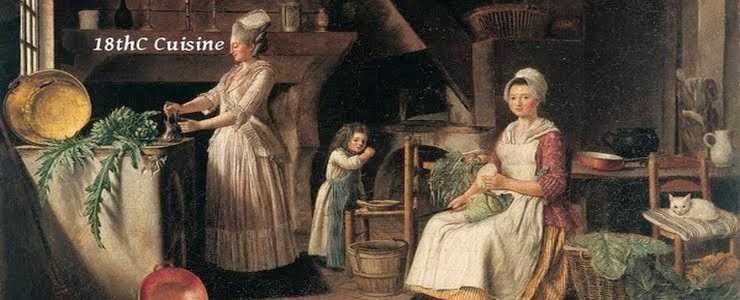Wednesday, August 22, 2012
Plum Tarte
Sunday, August 19, 2012
Pets de Putain, de Nonne & Old Farts
Farts of whore.
Make your fritter paste stronger than usual [thicker than one would use for including items such as apples, vegetables, marrow, etc.], by the means of an increase in flour & eggs, then stretch [drop from a spoon or use a syringe] the dough [into] large or thin [pieces], & as soon as they will be cooked [deep-fried] serve hot with sugar, & water of scent [flower water–orange, violet, etc.].
Faites votre paste de beignets plus forte qu'à l'ordinaire, par le moyen d'augmentation de farine & d'œufs, puis les tirez fort menus, & lors qu'ils seront cuits servez les chauds avec sucre, & eau de senteur.
Saturday, August 18, 2012
Butterflied Chickens - Poulets en chauvres-souris
Butterflied Chickens. You have hen chickens which you draw [disembowel] and clean [pluck and singe], the head above the stomach, the legs on the inside, you beat them & break the large [breast] bone, put them in a pan with oil, sweet herbs, season with salt and pepper, lemon section, & you roast them; when they are white [flesh is set and no pink juices exude when pierced with a skewer], being cooked, serve with a sauce of your imagination, or green [without sauce as it comes from the pan with its own juices]. Young partridges, Quails, Pheasants, & the Pigeons are done in the same way.
Poulets en chauvres-souris. Vous avez des poulets que vous appropriez, vous les troussez en poules, les pates dessus l'estomac, les jambes en dedans, vous les battez & cassez les gros os, les mettez dans une casserolle avec huile, fines herbes, assaisonnez, tranche de citron, & vous les faites griller, qu'ils soient blancs, étant cuits, une sauce à votre fantaisie, ou verte, servez. Les Perdreaux, Cailles, Faisandeaux, & les Pigeons se font de même.
Friday, August 17, 2012
Campain-oven or Tourtière
The Court & Country Cook, Massialot. 1702, p. 9 [New Instructions for Confectioners].
Some tourtières were lined with tin and could be used as a baking pan itself. Others were not lined and were used with an inserted baking pan of ceramic or metal.These little ovens could be used in the fireplace off to the side with some coals both under and on top to control the cooking temperature and even browning of the item inside. They would work equally as well in a campfire setting.
Sunday, August 12, 2012
Asperges confites. Pickled Asparagus
Hors d'œuvre were such a popular appetizer in the 18thC that special faïence plates were created for their service. Here you see an interpretation of the plate[*] from Diderot's Encyclopaedie, 1762-1777.
Pickled asparaguses. Take smallest; cut the white; & cut them in several pieces. Have coarsely crushed salt & cloves; make a layer in a well glazed pot. Make various layers of asparaguses, & the same seasoning, until the pot is full; pour good vinegar above: cover your pot well; & to draw them, when you need some, serve with a silver spoon, & never touch there [the pickle brine] with the hand, for fear of making the brine spoil; what happens inevitably without this attention.
Dictionnaire Portatif de Cuisine, d'Office, et de Distillation. Chez Vincent, Paris 1767, p. 55-56.
[*]55. A dish of hors-d'oeuvre for use at tables, furnished internally with roots or other artificial similar things, among which one serves some natural items.





